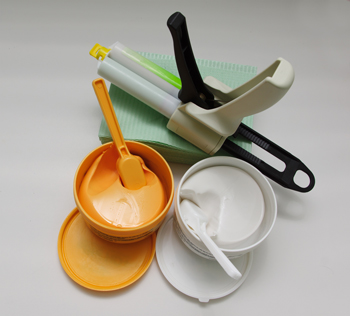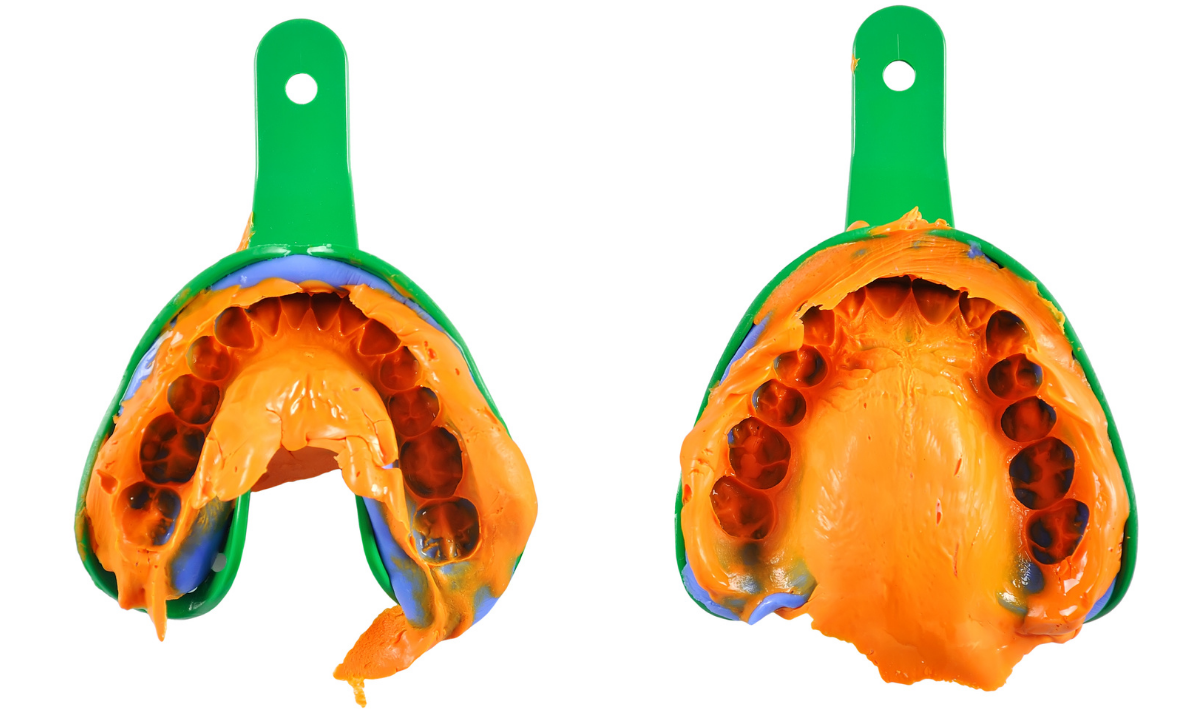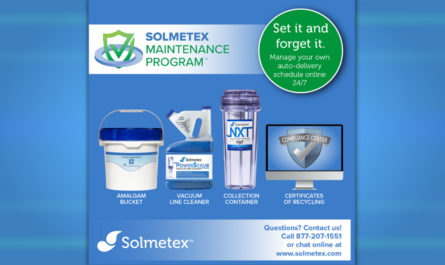Conventional impression materials continue to prove their value.
 There’s no denying dental technology has rapidly digitized in recent years. Still, many traditional technologies, such as conventional impressions, continue to play an important role in patient healthcare. Conventional impressions are still required for subgingival tooth preparations. In addition, impression materials can displace blood and saliva, whereas digital impression systems are not able to capture the margin when moisture or soft tissue blocks the tooth preparation. From gingival retraction pastes to compact intraoral syringes for efficient application of wash material, the technology behind conventional impressions is continually improving.
There’s no denying dental technology has rapidly digitized in recent years. Still, many traditional technologies, such as conventional impressions, continue to play an important role in patient healthcare. Conventional impressions are still required for subgingival tooth preparations. In addition, impression materials can displace blood and saliva, whereas digital impression systems are not able to capture the margin when moisture or soft tissue blocks the tooth preparation. From gingival retraction pastes to compact intraoral syringes for efficient application of wash material, the technology behind conventional impressions is continually improving.
From general dentists to orthodontists, prosthodontists and oral surgeons, dental professionals continue to rely on conventional impressions to create custom restorations, such as crowns, bridges and implants, as well as orthodontic appliances.
SA history of precision
Since reversible hydrocolloids were developed in the 1930s, enabling dentists to make impressions of undercuts, precision impression materials have become increasingly versatile. Soon after, dentists began using polysulfides and C-type silicones, although these materials were associated with shrinkage.
By 1965, ESPE – currently 3M Oral Care – had introduced polyether impression material as a single-step, medium viscosity impression material. Considered unique for its time, polyether impression material was known for its highly mechanical properties and excellent elastic recovery. And, there was virtually no concern about shrinkage. Dentists could depend on the material’s intrinsic hydrophilicity, and unique flow and setting behavior.
Polyether materials have been the go-to material for challenging cases. Their long working time and excellent flowability has facilitated precision and accuracy in implants and large restorations. Today’s polyether impression materials include viscosities, from heavy-body tray materials to light-body materials, enabling them to be used for a full range of indications.
Soon after the invention of polyether impression materials, new silicone chemistries were introduced, which were formulated with improved hydrophilicity. Vinyl polysiloxanes (including VPS/PVS, additional silicones and A-silicones) have always been intrinsically hydrophobic, but the addition of a surfactant has improved hydrophilicity. Recent vinyl polysiloxanes are known to contain tailor-made cross linkers designed for high tensile strength, resulting in high tear resistance and high elastic recovery. These materials are commonly used with popular double-bite and one-step techniques. By selecting the proper working and setting time of a material, a full range of crown and bridge indications can be accomplished.
Alginates
Developed in the late 1930s, soon after reversible hydrocolloids, alginates continue to be used for preliminary impressions. They generally are mixed by hand, since their material properties are only slightly improved with mixing devices. However, alginates provide poor surface detail reproduction and impressions must be cast within 15 to 30 minutes, since the impression shrinks as water evaporates from the alginate gel. This makes alginate impressions poorly suited for the preparation of temporary restorations, since they cannot be stored and reused. That said, alginates have low tear resistance, which can sometimes be an advantage, as when taking an impression of a periodontally affected tooth or over-fixed orthodontic appliances. These cannot be reproduced with tear-resistant materials, since that material cannot be removed from the patient’s mouth.
As an alternative, alginate replacements were introduced as cost-effective VPS materials offering high-dimensional stability. Alginate replacements are used to fabricate temporary restorations, as their smooth silicone surface can be easily trimmed. And because the impression has an unlimited shelf life, it can be used to remake temporary restorations when needed. These materials can be automatically mixed with hand dispensers or automatic mixing systems, eliminating mixing and processing errors.
Hand-mixed vs. automatic
All impression materials must be mixed from at least two components – usually a base and catalyst paste. Most impressions are still performed with hand-mixed materials, although hand dispensers with dual-barrel cartridges have been available since 1983 and automatic mixing systems for foil bags since 1993.
Ergonomic and clinical considerations often prompt dental practices to upgrade to automatic mixing systems. These systems enable dental professionals to fill the impression tray with the touch of a button, saving time and reducing stress. In some cases, a dental practice will upgrade after experiencing problems with an inadequate mix or to reduce material costs associated with hand dispensers.
Is it time to make a change?
Dentists might ask themselves if their current impression material has merely been doing the job. If so, there may be a solution better suited to the needs of their practice. Some points to consider include:
- What do I like/dislike about my current impression material? Is there something I would like to change?
- What percentage of impression retakes are necessary using my current impression material?
- How long do my impression appointments generally take?
- Would upgrading to an automatic mixing system help increase office efficiency at my practice?
Over time, impression materials have proven their value, and they likely will continue to do so for years to come. Equipped with the right solutions, dentists and their assistants are more likely to achieve the best possible results.
Editor’s note: Efficiency in Group Practice would like to thank 3M for its assistance with this article.





